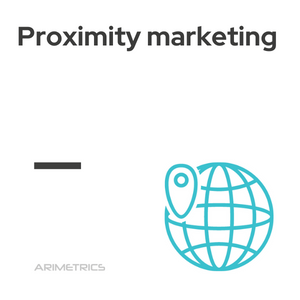Definition:
Proximity marketing, also known as hyperlocal marketing, encompasses those marketing techniques that use geolocation and other technologies to communicate with potential customers. It is therefore a close marketing, based on the place where the client is located, fast and direct and at the same time personalized depending on the place and / or time.
This type of marketing, which in little complex actions generally such as the distribution of brochures on the street has evolved thanks to the use of new technologies so that it now has multiple possibilities that adapt to the situation of the client and our company.
What is proximity marketing for?
Proximity marketing is using technologies such as beacons and GPS to send personalized and relevant messages to consumers based on their geographic location. This technique is especially useful for companies that want to interact with their customers in a more direct and effective way. By sending offers, promotions or targeted information when users are near a store or event, brands can increase the likelihood that consumers will make a purchase or participate in an activity.
In addition, proximity marketing allows companies to collect valuable data on customer behavior, such as visit patterns and shopping preferences. This information can be used to optimize marketing campaigns, adjust inventory and improve the overall customer experience. In a highly competitive environment, proximity marketing not only helps attract new customers, but also builds loyalty with existing customers by providing personalized and relevant experiences at the right time.
Advantages of proximity marketing
- Reach:today the percentage of the population with mobile devices is very high and continues to grow, so thanks to new technologies we can reach a large number of users of all types of profiles.
- Personalization:without a doubt, the main feature of proximity marketing is the multiple personalization options that it gives us when communicating with customers, and that is that it is a powerful segmentation tool.
- Proximity:proximity to the customer is a potential advantage offered by this type of marketing and that can facilitate the sale of products.
Examples of proximity marketing
- Brochures:it is the oldest type of proximity marketing and also the most basic, it consists of approaching potential customers on the street and offering them pamphlets with information about our company, inviting them to come and meet it, in many things with discounts or promotions that make it more attractive.
- QR codes:these are two-dimensional barcodes which we can read through our smartphone and that link us to web pages, apps, etc. They carry out an informative but also promotional work.
- Geolocation:thanks to the implementation of satellite location on mobile devices, companies can know where customers are with their consent through applications, social networks and web pages and thus offer them personalized content.
- Bluetooth Marketing:thanks to beacons,small devices that transfer information via Bluetooth, companies have another variant to connect with customers and offer them offers tailored to their needs.
- SMS: although it is a less and less used option, companies continue to use messaging services to reach users.
Proximity Marketing and Local SEO
Proximity marketing and local SEO are two complementary strategies that focus on attracting customers to physical businesses by optimizing online visibility. While proximity marketing uses technologies such as beacons and geolocation to send messages and offers to consumers based on their location, local SEO focuses on improving a business’s ranking in local search results. This includes optimizing local directory presence, managing reviews, and ensuring that business information such as address and phone number is accurate and consistent across all platforms.
By combining these two strategies, businesses can maximize their reach and effectiveness. For example, a customer looking for a nearby restaurant can find a business through locally optimized search results and, at the same time, receive a special offer on their cell phone when they are within walking distance of the establishment. This synergy not only enhances the customer experience by providing relevant and timely information, but also increases the likelihood of conversion by engaging consumers at the precise moment they are making purchasing decisions.

